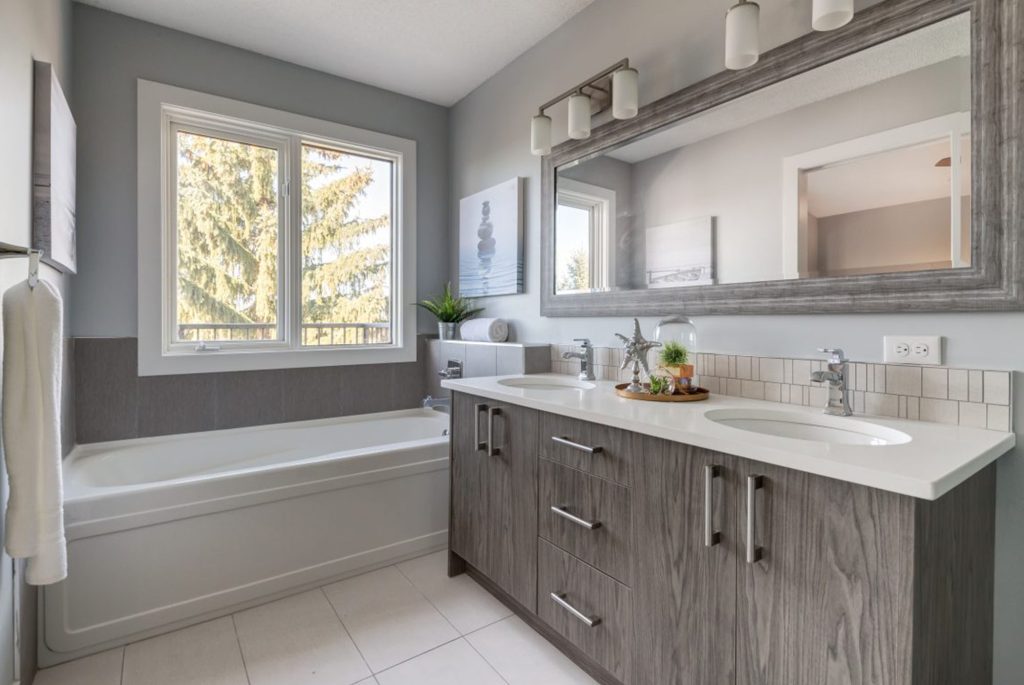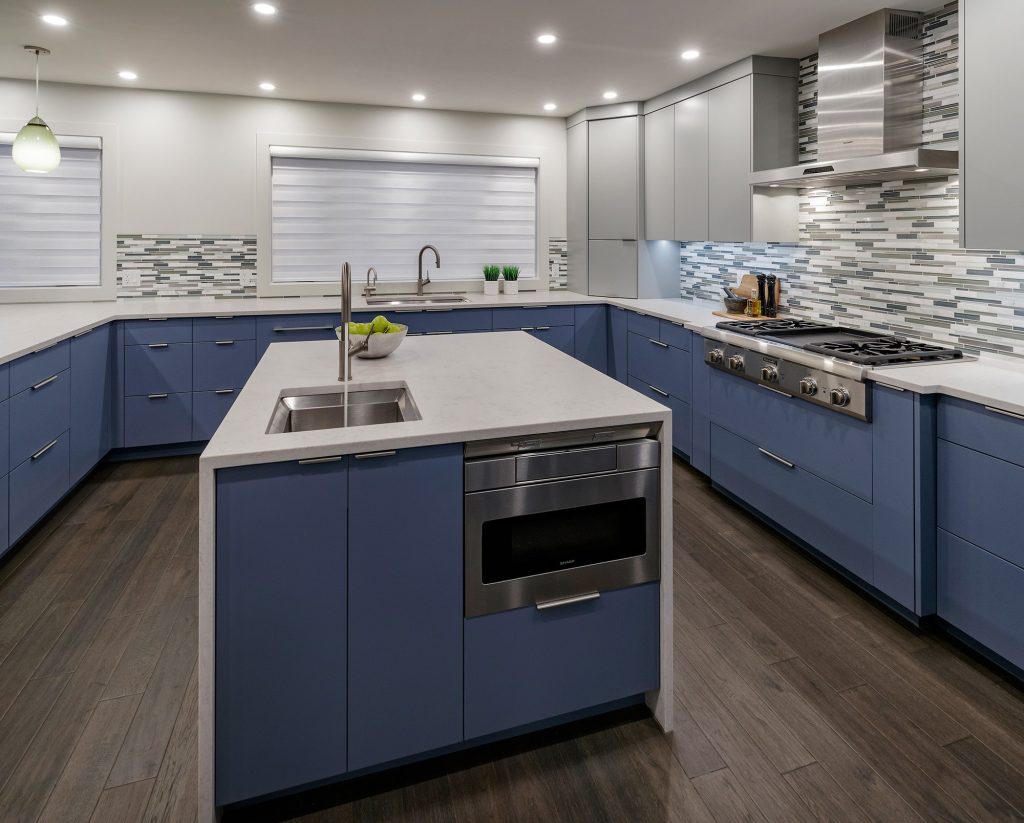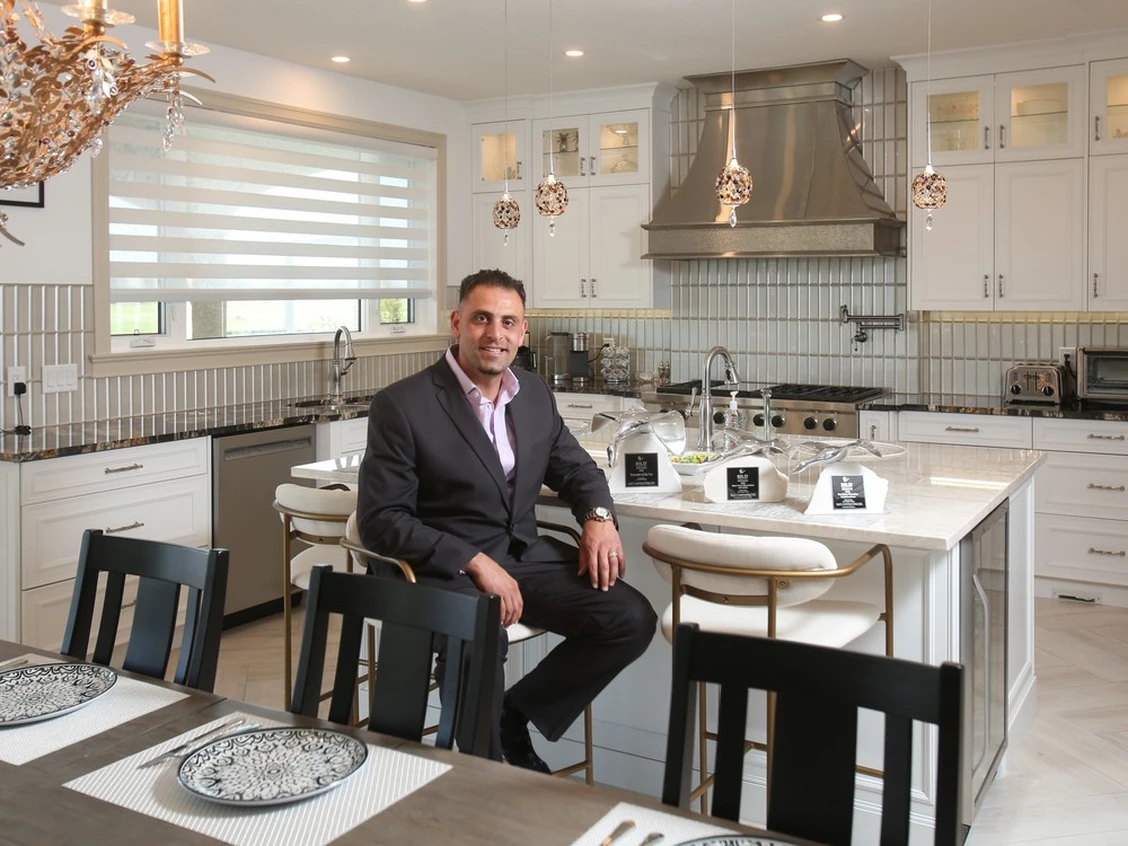The Excitement of a Kitchen Remodel
Embarking on a kitchen remodel can be an exhilarating adventure, transforming a once mundane space into the heart of your home. As you prepare to dive into this ambitious project, let’s discuss some key considerations to ensure a successful and satisfying outcome.
Setting Your Remodelling Goals
Each remodeling objective has different implications for your project, and understanding your priorities will be crucial in guiding your design decisions and budget allocation.
If your main goal is to improve the functionality of your kitchen, focus on elements that will enhance your cooking experience. This might include upgrading appliances, optimizing the layout for better workflow, or incorporating additional storage solutions. Assess your current kitchen’s shortcomings and consider how your new design can address these issues, making the space more efficient and enjoyable to use.
If your primary objective is to elevate the visual appeal of your kitchen, concentrate on design elements that will transform the space’s look and feel. This could involve selecting stylish cabinetry, countertops, and backsplash materials, as well as incorporating on-trend color schemes and decorative accents. Determine your desired design style, such as modern, farmhouse, or transitional, and let this vision guide your choices to create a cohesive and visually stunning kitchen.
Should your main focus be enhancing your home’s resale value, you’ll want to consider which remodeling projects are most likely to yield a high return on investment. Generally, kitchen remodels are known to provide significant returns, but it’s essential to strike a balance between investing in quality materials and avoiding over-improvements that may not appeal to potential buyers. Research popular trends and features that are attractive to homebuyers in your area, and select finishes and fixtures that will stand the test of time.
Identifying your primary objective for your kitchen remodel is vital for guiding your design decisions and prioritizing your budget. By focusing on what matters most to you, whether it’s functionality, aesthetics, or resale value, you’ll be better equipped to create a space that meets your unique needs and preferences.
Reflect on your current kitchen’s limitations.
Taking the time to evaluate your kitchen’s shortcomings is essential for creating a more enjoyable and functional space. Identifying areas that need improvement can guide your remodeling decisions and help ensure that your updated kitchen meets your needs and expectations.
Lack of storage: A well-organized kitchen with ample storage is key to maintaining an efficient and clutter-free space. If your current kitchen is lacking in storage, consider implementing solutions like custom cabinetry, pull-out drawers, or even open shelving to maximize storage capacity. Also, explore creative storage ideas such as corner drawers, spice racks, or a built-in pantry to make the most of available space.
Inadequate lighting: Proper lighting is crucial for both safety and ambiance in a kitchen. If your current space suffers from insufficient lighting, consider incorporating a mix of ambient, task, and accent lighting to create a well-lit and inviting atmosphere. Recessed lights, pendant lights, and under-cabinet lighting are all popular options for improving illumination and enhancing the overall aesthetic of your kitchen.
Inefficient layout: A kitchen’s layout plays a significant role in its functionality. If you find that your current layout is inefficient or frustrating to navigate, it may be worth exploring alternative layouts during your remodel. Popular options include the U-shaped, L-shaped, or galley-style kitchens, each offering unique advantages in terms of workflow and space utilization. Consult with a kitchen designer or contractor to determine the most suitable layout for your needs, taking into account factors such as available space, appliance placement, and your cooking habits.
By carefully assessing your kitchen’s shortcomings and addressing these issues during your remodel, you can create a space that is not only visually appealing but also practical and enjoyable to use. Investing in thoughtful design decisions and solutions will result in a kitchen that caters to your needs and enhances your daily cooking experience.
Establish your design preferences.
Consider your personal style and how it can be incorporated into your new kitchen. Do you prefer a modern, minimalist look, or a cozy, farmhouse vibe? Establishing a clear design direction will streamline your decision-making process.
Budgeting for Your Kitchen Remodel
Consider the scope of the project.
The extent of your remodel will significantly impact the overall cost. Determine whether you’re looking for a simple facelift or a complete overhaul, and plan your budget accordingly.
Prioritize your must-haves and wishlist items.
Create a list of non-negotiable elements and dream features, which will help you allocate funds and keep your expectations in check.
Allocate funds for unexpected expenses.
Unforeseen issues can arise during any renovation project. Set aside a contingency fund to cover any surprises, ensuring a smoother remodeling experience.
Choosing the Right Kitchen Layout
Analyzing your current layout
Take note of the elements that work well in your existing kitchen, as well as those that need improvement. This information will inform your new layout choices.
Exploring popular kitchen layout options
Research popular layouts like the galley, L-shaped, or U-shaped designs to determine which best suits your needs and preferences.
Tips for optimizing your kitchen’s flow and functionality
Consider the kitchen work triangle – the relationship between the refrigerator, stove, and sink – to create an efficient and user-friendly space.
Cabinetry: Storage Solutions and Style
The importance of cabinetry in kitchen design
Cabinets are essential for both storage and aesthetics. They provide a backdrop for the overall design and should blend seamlessly with the rest of the space.
Selecting the right materials for durability and aesthetics
Research cabinet materials such as solid wood, plywood, or MDF to determine which best meets your durability requirements and desired look.
Custom versus pre-fabricated cabinets
Consider whether custom-built cabinets or pre-fabricated options better suit your budget, style, and functional needs.
Countertops: Material Matters
Popular countertop materials and Their Pros and Cons
Explore the pros and cons of various countertop materials, such as granite, quartz, and laminate, to determine the ideal choice for your kitchen.
Balancing style, durability, and budget
Weigh the importance of aesthetics, longevity, and cost when selecting your countertop material, ensuring a choice that meets your unique needs.
How to care for your countertops to ensure longevity
Proper maintenance is crucial for preserving your countertops. Learn the recommended cleaning and care techniques for your chosen material.
The Perfect Backsplash
The role of backsplash in your kitchen design
Backsplashes protect your walls from splatters and spills while adding visual interest and personality to your kitchen.
Material and style options for a stunning backsplash
Explore various materials, such as ceramic tile, glass, or natural stone, to create an eye-catching and cohesive design.
Tips for choosing a backsplash that complements your countertops
Select a backsplash that harmonizes with your countertops, either by contrasting or coordinating colors and textures, to create a cohesive and visually appealing space.
Flooring: Foundations for Functionality and Style
Popular kitchen flooring materials
Research flooring options like hardwood, laminate, and tile to find the perfect balance of beauty and practicality for your kitchen.
Considering durability and maintenance needs
Choose a flooring material that can withstand heavy foot traffic, spills, and stains, while also requiring minimal maintenance.
Coordinating flooring with other elements in your kitchen
Ensure your flooring complements your cabinetry, countertops, and overall design for a unified and harmonious look.
The Art of Choosing Appliances
Assessing your appliance needs and preferences
Consider your cooking habits, family size, and desired features when selecting appliances such as the refrigerator, stove, and dishwasher.
Energy-efficient options for eco-conscious homeowners
Look for ENERGY STAR-certified appliances to reduce energy consumption and save on utility bills without sacrificing performance.
The impact of appliance finishes on your kitchen’s aesthetics
Choose appliance finishes that align with your design preferences, whether that’s stainless steel, black stainless, or custom panel-ready options.
The Role of Lighting in Your Kitchen
Types of lighting to include in your kitchen remodel
Incorporate ambient, task, and accent lighting to create a well-lit and inviting space.
The importance of layering and task lighting
Layering different types of lighting ensures adequate illumination for various tasks, such as food preparation, cooking, and dining.
Tips for selecting stylish and functional fixtures
Choose lighting fixtures that complement your kitchen’s design while also providing sufficient light for your needs.
Kitchen Color Schemes: Setting the Mood
Popular kitchen color trends
Research current color trends, such as bold accent colors or soothing neutrals, to find inspiration for your kitchen’s palette.
The psychology of color in your kitchen
Understand how color influences mood and energy, and select a scheme that promotes a positive and inviting atmosphere.
Coordinating colors with your chosen materials
Ensure your color choices harmonize with your cabinetry, countertops, and flooring for a cohesive and polished look.
Incorporating Kitchen Island Ideas
Benefits of having a kitchen island
A well-designed island can provide additional workspace, storage, and seating, making it a valuable addition to your kitchen.
Design tips for a functional and stylish island
Consider incorporating features such as a sink, cooktop, or charging stations, and choose materials that complement your kitchen’s design.
Customizing your island for storage and seating
Tailor your island to suit your needs with custom storage solutions, and provide ample seating for casual dining or socializing.
Maximizing Storage Space
Creative solutions for small kitchens
Explore space-saving ideas like pull-out pantries, corner drawers, and pegboard walls to make the most of limited space.
The art of decluttering and organization
Maintain a tidy and efficient kitchen by regularly decluttering and employing smart organizational tools and strategies.
Using vertical space for added storage
Utilize wall-mounted shelving, pot racks, or magnetic knife strips to capitalize on vertical space and reduce countertop clutter.
The Beauty of Open Shelving
Pros and cons of open shelving in the kitchen
Weigh the advantages and disadvantages of open shelves, such as easy access and visual appeal versus dust accumulation and the need for regular tidying.
Design ideas for incorporating open shelves
Consider creative placement and styling options, like mixing open shelves with traditional cabinetry or displaying colorful dishware.
Tips for styling and organizing open shelves
Arrange items thoughtfully, balancing both form and function to create an appealing and practical display.
Adding Personality with Kitchen Accessories
Choosing the right decorative elements for your kitchen
Select accessories that reflect your personality and enhance your kitchen’s design, such as artwork, rugs, or unique hardware.
Tips for accessorizing with function in mind
Incorporate functional accessories like utensil holders, dish racks, or cookbook stands that also contribute to your kitchen’s aesthetic.
How to create a cohesive and stylish look
Coordinate your accessories with your color scheme and design style to ensure a harmonious and visually pleasing space.
Incorporating Smart Technology
The benefits of a smart kitchen
Smart appliances and gadgets can improve efficiency, convenience, and safety in your kitchen, making everyday tasks easier and more enjoyable.
Popular smart appliances and gadgets
Explore options like smart refrigerators, ovens, and lighting systems to enhance your kitchen’s functionality and create a connected space.
Integrating technology without sacrificing style
Incorporate technology discreetly, with hidden charging stations or sleek appliance designs, to maintain your kitchen’s aesthetic.
Hiring Professionals for Your Kitchen Remodel
When to bring in the experts
Enlist the help of professionals for tasks that require specialized skills, such as plumbing, electrical work, or custom cabinetry.
Tips for selecting the right contractor or designer
Research and interview potential contractors and designers, considering factors like experience, references, and compatibility with your vision.
Navigating permits and building codes
Work with your contractor or designer to ensure your project adheres to local building codes and permit requirements, avoiding potential complications.
The Timeline of a Kitchen Remodel
Realistic expectations for your project’s duration
Understand that kitchen remodels can take several weeks or months to complete, depending on the scope of the project and any unforeseen obstacles.
Phases of a typical kitchen remodel
Familiarize yourself with the stages of a remodel, such as demolition, framing, installation, and finishing touches, to better anticipate the timeline.
Tips for staying on track and avoiding delays
Communicate regularly with your contractor and promptly make decisions to minimize delays and keep your project moving forward.
Surviving the Remodeling Process
Preparing your home and family for the remodel
Discuss the project with family members, set up a temporary kitchen, and establish a construction-free zone to minimize disruption.
Setting up a temporary kitchen during construction
Create a makeshift cooking space with essential appliances and tools to help you manage meal preparation while your kitchen is under construction.
Coping with the challenges of a remodel
Stay patient, maintain open communication with your contractor, and focus on the end goal to help you persevere through the remodeling process.
Conclusion: Enjoying Your Dream Kitchen
Celebrating the completion of your kitchen remodel
Once your remodel is complete, take a moment to revel in your beautiful, functional new space and appreciate the effort and investment that made it possible.
Tips for maintaining your new kitchen
Keep your kitchen in pristine condition by regularly cleaning and maintaining surfaces, appliances, and fixtures according to manufacturer recommendations.
Embracing the memories you’ll create in your updated space
Enjoy the countless meals, gatherings, and special moments that await you in your newly remodeled kitchen, knowing that your thoughtful planning and hard work have paid off.








